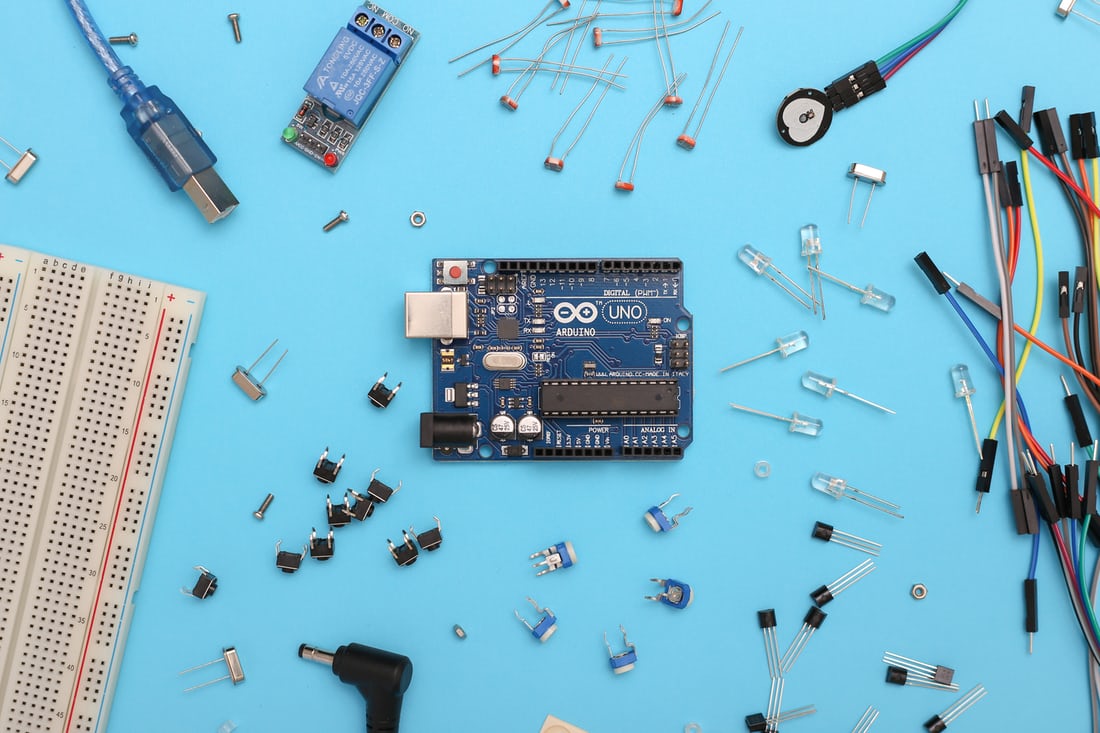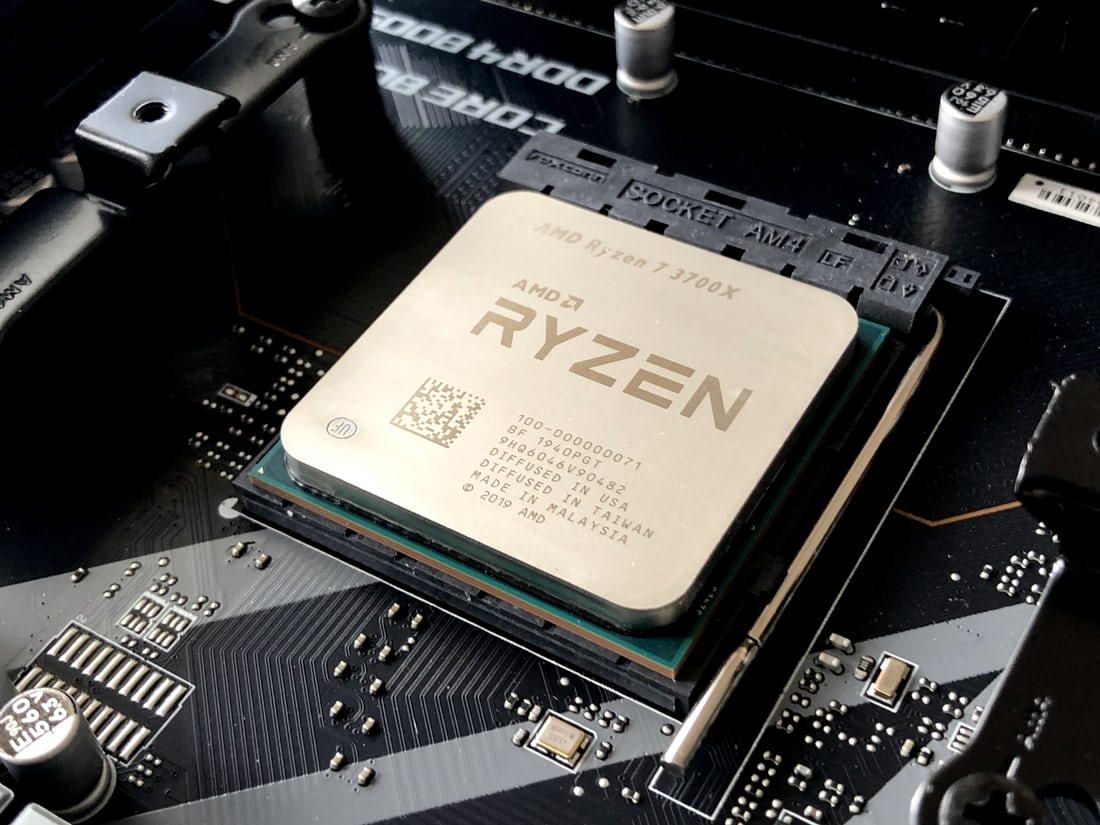A chameleon chip is a microprocessor that may be reconfigured. It has hardware that can be erased. It is also possible to self-rewire it. As a result, the chameleon chip can be modified to do programming tasks. A reprogrammable processor is made up of functional blocks that are connected in parallel. The functional blocks are computational blocks made up of multiple computational units that may handle data at the same time.
The connections are modified while reconfiguring these chips. The relationships between blocks, as well as inside blocks, are altered. After installing the software, the current hardware design is wiped, and a new hardware design is created by activating and deactivating various connections. It specifies the hardware configuration for that software. The reconfiguration of the Chameleon chip takes nearly 20 microseconds. Chameleon chips, Billions of Operation (BOPS), and Parallel Array Computing Technology are examples of reconfigurable processors (PACT).
A reconfigurable processor is a microprocessor that can rebuild itself dynamically and has erasable hardware. This enables the chip to adapt efficiently to the programming tasks requested by the software with which it is now interacting. The reconfigurable processor should be able to convert from a video chip to a central processing unit (CPU) to a graphics chip, for example, all while ensuring that programmes run as quickly as feasible.
A chip’s design today crosses far too many architectural boundaries. Nobody has yet found out how to make a chip that meets all of the requirements for the ideal consumer gadget. However, we may be getting closer.

A new type of chip can now adapt to any programming task by effectively wiping its hardware design and regenerating new hardware that is precisely suited to run the software in question. Reconfigurable processors are the name given to these semiconductors. These new chips can rewire themselves on the fly to generate the exact hardware required to run software at the highest possible speed. CHAMELEON CHIP is the name of this revolutionary chip.
ABSTRACT
A reconfigurable processor is a microprocessor that can rebuild itself dynamically and has erasable hardware. This enables the chip to adapt efficiently to the programming tasks requested by the software with which it is now interacting. The reconfigurable processor should be able to convert from a video chip to a central processing unit (CPU) to a graphics chip, for example, all while ensuring that programmes run as quickly as feasible.
These chips are similar to “on-demand chips.” In terms of gadget functionality, this ability can equate to a lot of flexibility. For example, a single device might be used as a camera and a tape recorder (among many other things): simply download the required software, and the processor will reconfigure itself to optimise performance for that application.
That type of device adaptability, according to a recent Red Herring magazine article, could be accessible by 2003. A reprogrammable processor chip typically has numerous functional blocks, which are parallel processing computational units. These functional blocks are linked in every way that is conceivable. The connections within the functional blocks and the connections between the functional blocks change as the chip is reconfigured.
That is, when a specific programme is loaded, the existing hardware design is deleted and a new hardware design is created by activating a specific number of connections while leaving others idle. This will determine the best hardware configuration for the software in question. The compact size of each processing element is crucial to the design.
The semiconductor’s smallest segments can be specified with just 50 bits of software code, allowing the entire chip to be reprogrammed with just 50,000 bits of software description. The complete processing array may be reconfigured in approximately 20 microseconds.

Chameleon Systems, Billions of Operations (BOPS), and PACT are now offering reconfigurable processors (Parallel Array Computing Technology). Only Chameleon offers a design environment that enables users to convert their algorithms to hardware configuration on their own.
INTRODUCTION
Instead, imagine that the chip’s circuitry might be tuned to the challenge at hand—say, computer-aided design—and then rewired on the fly when a tax-preparation application was loaded. One set of chips, about the size of a credit card, could perform practically any task, including transforming into a cellular phone. The market for such versatile marvels would be enormous, resulting in lower user costs.
As a result, computer scientists are developing a revolutionary approach that could boost number-crunching capacity while also lowering costs. It’s known as the chameleon chip.
Chameleon chips would be an expansion of what field-programmable gate arrays can already do (FPGAS).
FPGA (FIELD PROGRAMMABLE GATE ARRAYS)
An FPGA is surrounded by a wire grid. A switch at each crossing can be semipermanently opened or closed by delivering a particular signal to it. Typically, the chip must be placed in a small box that provides programming signals before it can be used. However, researchers in Europe, Japan, and the United States are working on strategies to rewire FPGA-like chips at any moment, as well as software that can map out circuitry that is optimal for specific issues.
A technology known as “field-programmable gate arrays” is one of the most promising methods in the world of reconfigurable architecture. The aim is to create uniform arrays of thousands of logic pieces, each of which can be reprogrammed to work in any desired pattern, thus rewiring a chip’s circuitry on demand. A designer can save a new wire layout in the chip’s memory for later use.
FPGAs are higher-order logic functions that are implemented by stringing together logic blocks using software commands. Logic blocks are digital circuits that execute binary operations and are comparable to switches with many inputs and a single output.
Developers can change both the logic processes performed within the blocks and the connections between the blocks of FPGAs by sending signals to the chip that have been programmed in software, unlike other integrated circuits.
FPGA blocks can perform the same high-speed hardware functions as fixed-function ASICs, but unlike ASICs, they may be rewired and reprogrammed at any moment via software from a distant location. Even though it took a few seconds,
The advancement of FPGA technology has elevated arrays beyond their original function of supplying glue logic. With their existing capabilities, they definitely belong in the same category as cpus and DSPs as system-level components.
For example, the largest FPGA device built by the company with which one of the writers of this article is linked has more than 150 billion transistors, which is seven times that of a Pentium-class microprocessor. Given today’s time-to-market requirements, all system-level components must be simple to integrate, particularly since the phase requiring the integration of several technologies has become the most time-consuming aspect of a product’s development cycle.
Field programmable gate arrays (FPGAs) have the advantage of allowing companies to develop chips quickly since they can be modified using software. A chip can be modified simply by putting new configuration into it, either during execution or as part of an upgrade to allow new applications. In terms of cost, speed, and power usage, the benefits are obvious. Multi-parallelism functionality allows a single FPGA to replace many ASICs.
FPGA uses are numerous.
- image manipulation
- cryptography
- cellular communication
- Digital signal processing and memory management
- telephone systems
- Base stations for mobile phones.
The chips haven’t changed colour yet. However, they may influence how we use computers in the future. It’s a mix of programmable logic and bespoke integrated circuits. When performing high-performance jobs, specialised chips that do one or two things really well rather than a lot of things averagely are used. We now have chips that can be rewired in a second thanks to field programmed chips. As a result, the advantages of customization can be made available to the general public.
A reconfigurable processor is a microprocessor that can rebuild itself dynamically and has erasable hardware. This enables the chip to adapt efficiently to the programming tasks requested by the software with which it is now interacting. The reconfigurable processor should be able to convert from a video chip to a central processing unit (cpu) to a graphics chip, for example, all while ensuring that applications run as quickly as feasible.
The new chips are referred to as “chips-on-demand.” In terms of gadget functionality, this ability can equate to a lot of flexibility. For example, a single device might be used as a camera and a tape recorder (among many other things): simply download the required software, and the processor will reconfigure itself to optimise performance for that application.
Traditional hard-wired chips and various types of programmable microprocessors compete with reconfigurable processors in the market. Programmable chips have been around for more than a decade. High-performance programmable circuits, such as digital signal processors (DSPs), are utilised in cell phones, vehicles, and many types of music players.
Programmable logic chips, on the other hand, are chips containing arrays of memory cells that can be programmed to perform hardware functions using software. These chips are more versatile than specialist DSP chips, but they are also slower and more expensive. Hard-wired chips are the oldest, cheapest, and fastest of all the alternatives, but they are also the least versatile.
Chameleon’s chips are designed to simplify communication system design while delivering increased price/performance numbers. They are highly flexible processors that can be reconfigured remotely in the field. The chameleon chip is a reconfigurable high-bandwidth communications processor (RCP). It seeks to change the design of a system from a remote location. This will result in more adaptable handheld devices. 24,000 16-bit million operations per second (MOPS), 3,000 16-bit million multiply-accumulates per second (MMACS), and 50 channels of CDMA2000 chip-rate processing are provided by the processors. The CS2112, a 0.25-micron chip, is an example.
These new chips can rewire themselves on the fly to generate the exact hardware required to run software at the highest possible speed. A chameleon chip is an example of this type of chip. This is also known as a “chip on demand.”
“In terms of versatility, reconfigurable computing goes beyond programmable processors. It is conceivable, if not usual, to “rewrite” silicon so that it can execute new functions in a fraction of a second. Reconfigurable chips are simply the most programmable of them.”
The ACM can outperform the DSP in terms of total performance since it just builds the hardware required to run the software, whereas DSPs and microprocessors force the software to suit their design.
Because handheld devices are often constructed around highly tuned speciality chips that do one thing exceptionally well, this type of adaptability is not achievable today. These chips are quick and inexpensive, but their circuits are written in stone — or at least silicon.
A versatile device would need a lot of specialised chips, which would be expensive and inconvenient. You could also use a general-purpose microprocessor, such as the one in your computer, but this would be slow and expensive.
As a result, chip designers are increasingly resorting to reconfigurable hardware—integrated circuits in which the core logic pieces’ architecture can be constructed and reconfigured on the fly to match specific applications.
In today’s ultra-competitive marketplace, multimedia system designers face three important challenges: Our products must accomplish more, cost less, and reach the market faster than ever before. Though each of these objectives is possible on its own, the hat trick is difficult to achieve using typical design and execution methods.
Fortunately, new reconfigurable computing approaches are emerging that make it possible to design systems that meet all three needs at the same time.
MULTIFUNCTIONAL IMPLEMENTATION
Multiple algorithms require distinct hardware modules in traditional ASIC and FPGA. The chameleon chip is divided into four functional sections for four algorithms. Only one reconfigurable fabric is required to load all four programmes in the reconfigurable technology. Chameleon chips can rewire themselves in order to run software.
It’s made to fix communication problems. It has been extensively altered. It can operate on a Reconfigured Communication Processor with a high bandwidth (RCP). This chameleon chip is a multitasking, quick, and inexpensive chip.
The reconfigurable fabric is first loaded with algorithm 1. During the execution of algorithm 1, algorithm 2 is loaded. After algorithm 2 has completed its processing, algorithm 3 is loaded. As a result, the reconfigurable fabric is loaded with the four algorithms. The most important thing to remember is that only one algorithm can be loaded at a time.
TECHNOLOGIES APPLICABLE TO CHIP
- eCONFIGURABLETM TECHNOLOGY
For instantaneous reconfiguration, eConfigurableTM Technology is used. In one clock cycle, this technique reconfigures fabric and enhances the number of voice, data, and video channels per chip. Each Slice, as previously stated, can be customised independently.
Loading the Background Plane from external memory takes only 3 seconds per Slice and does not interfere with active Fabric operations.
It only takes one clock cycle to switch from the Background Plane to the Active Plane. The four algorithms are loaded into the complete reconfigurable processing Fabric one at a time using eConfigurable Technology.
2. Development Tools for CSIDE
No one but the creators has been able to port software to the CPUs since they lack the appropriate software tools. As a result, customers were forced to give engineers their algorithms.
Chameleon Systems’ software allows users to do their own programming, maintaining the confidentiality of their algorithms.
CSIDE is a full toolbox for creating, debugging, and verifying RCP designs. CSide maps algorithms into the chip’s reconfigurable processing fabric using a combination of C and Verilog (Verilog HDL is a hardware description language used to build and document electronic systems) flow (RPF).
An efficient GNU C compiler for the ARC Processor and an optimised Verilog To Bits (V2B) synthesiser for the Reconfigurable Processing Fabric are included in CSIDE, as well as an interactive floor planner, an instruction-set simulator, and a unified debug environment for the ARC core and the RPF.
3. The eBIOSTM
The Embedded Processor System and the Fabric are connected via eBIOS. Resource allocation, configuration management, and DMA services are all provided by eBIOS. The eBIOS calls are produced automatically at compile time, however they can be changed to control any function precisely.
The following are the key benefits of the chameleon chip:
- Lower prices
- Low power consumption
- It has the ability to design specialised communication signal processors.
- Improved efficiency
Chameleon Chip Applications
- WLL (Wireless Local Loop):
WLL employs reconfigurable technology due to the high processing power and broad bandwidth of reconfigurable processors.
2. Radio that is defined by software:
This principle is applicable to cell phone technology.
3. Base stations for wireless networks:
Reconfigurable technology is used in the base station.
4. DSL with high performance:
Users should have enough of bandwidth.
CONCLUSION
These new chips called chameleon chip are able rewire themselves on the fly to create the extract hardware needed to run a piece of software at a outmost speed.
It’s applications are in data-intensive internet, DSP, wireless base stations, voice compression, software- defined ratio. It’s advantages are that it can create customized communications signal processors, it has increased performance and channel count and it can adapt more quickly to the new requirements and standards.



